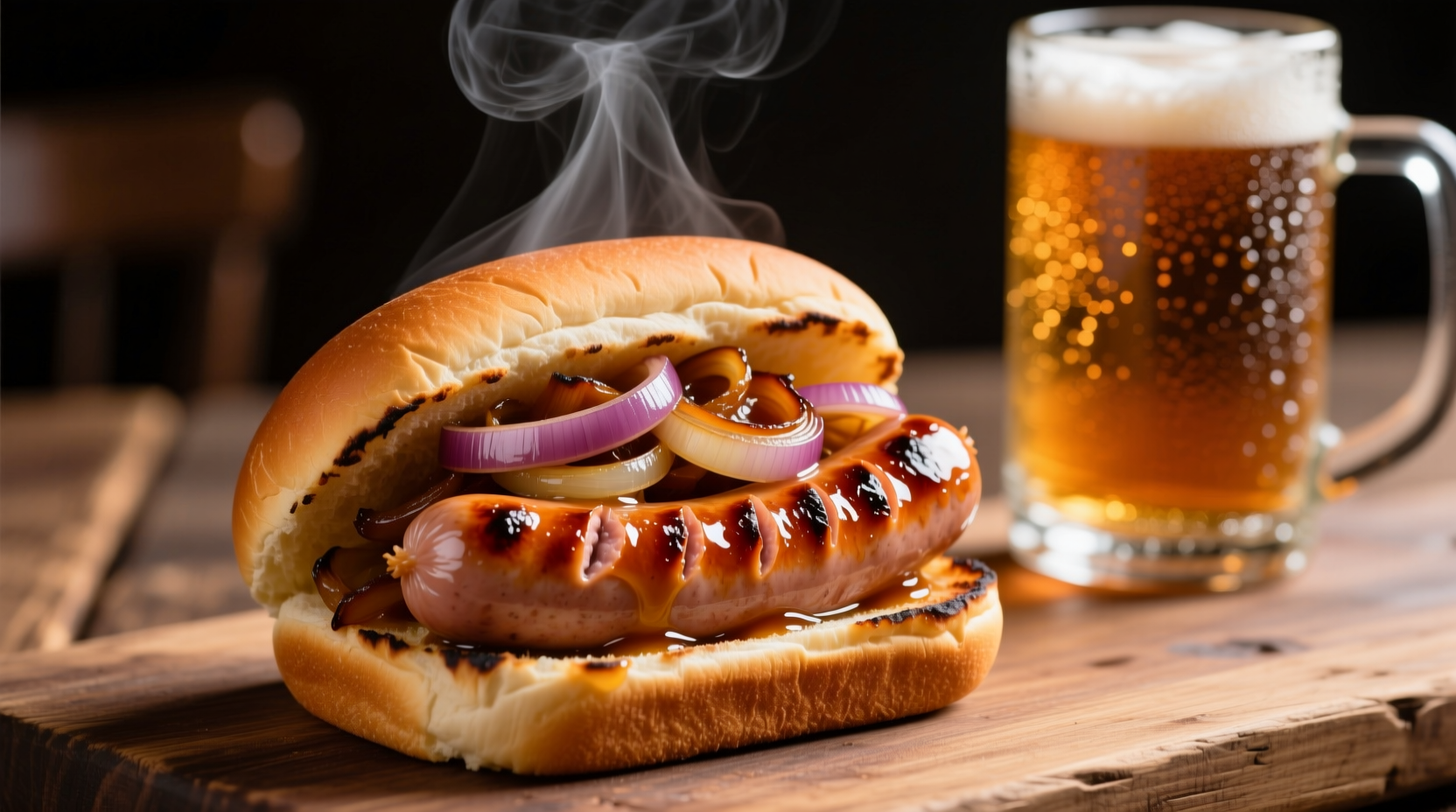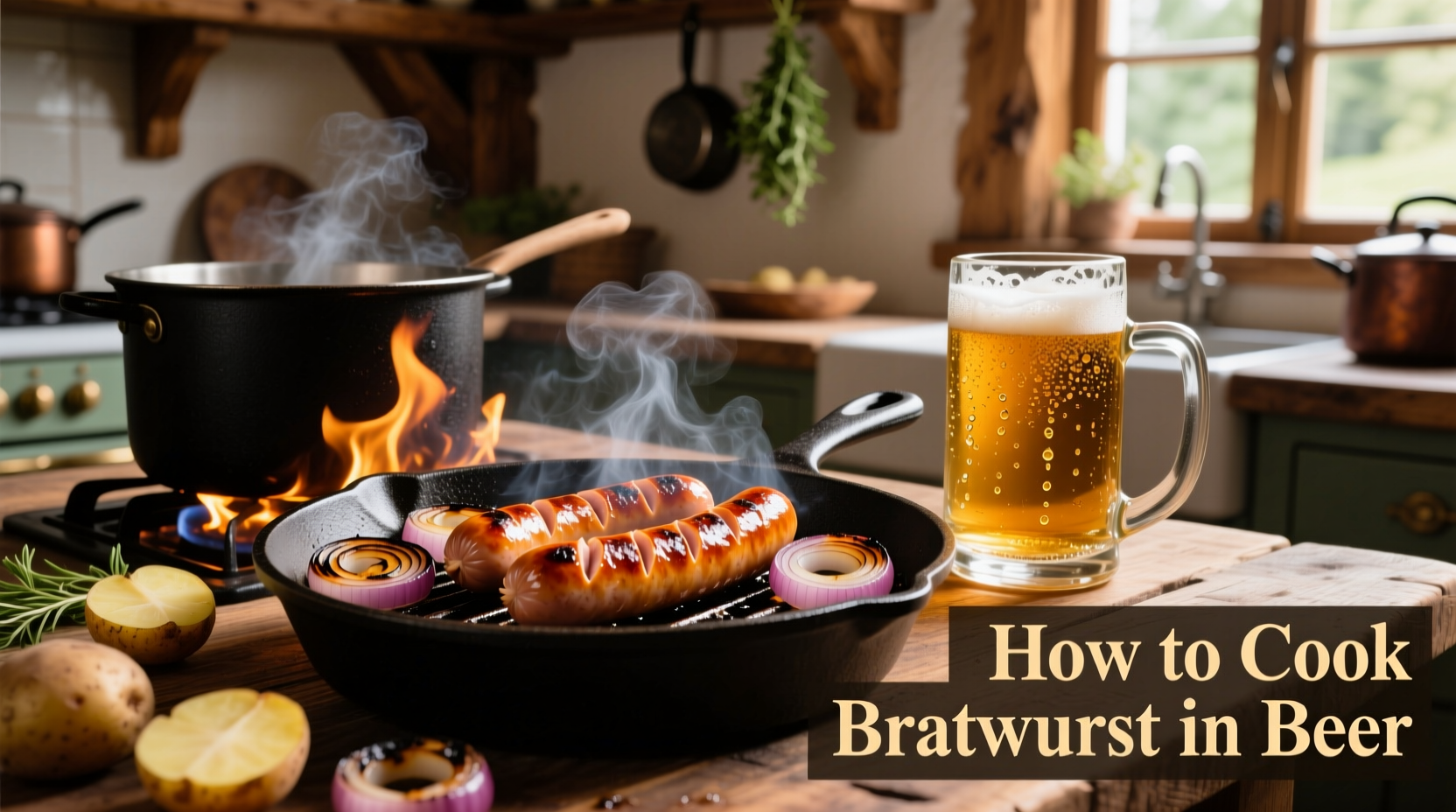The Secret to Perfect Beer-Braised Bratwurst
Nothing beats the rich, complex flavor of bratwurst cooked in beer. This traditional German technique transforms ordinary sausages into a culinary masterpiece through gentle simmering that infuses the meat with malty sweetness while keeping it incredibly juicy. Unlike boiling, which can make casings tough, the beer braising method maintains optimal texture while adding subtle depth that plain water can't achieve.
Why Beer Makes All the Difference
Beer isn't just for drinking with brats—it's essential for cooking them properly. The carbonation in beer helps tenderize the meat, while the malt and hops impart nuanced flavors that complement the pork's richness. When simmered correctly, the alcohol evaporates, leaving behind only the complex flavor compounds. This technique dates back to 14th century Germany, where butchers discovered that simmering sausages in leftover brewery mash created superior texture and taste.
| Beer Type | Flavor Profile | Best For | Alcohol Content |
|---|---|---|---|
| German Pilsner | Crisp, floral, slightly bitter | Traditional preparation | 4.5-5.2% |
| Helles Lager | Malty, smooth, subtle sweetness | Milder flavor preference | 4.7-5.4% |
| Wheat Beer | Banana, clove notes | Summer gatherings | 4.8-5.5% |
| Avoid: Stout/Porter | Bitter, roasted | Overpowers sausage | 5.0-7.5% |
Essential Equipment Checklist
- 12-inch skillet or Dutch oven (cast iron preferred)
- Meat thermometer (critical for accuracy)
- Wooden tongs (never pierce brats!)
- Slotted spoon for removal
- Heavy-bottomed pot if cooking more than 6 brats
Step-by-Step Cooking Process
Preparation Phase (5 minutes)
Remove brats from refrigerator 20 minutes before cooking to bring to room temperature. In your skillet, combine 1 bottle (12 oz) German lager, 1 sliced onion, 2 crushed garlic cloves, 1 teaspoon caraway seeds, and 1 bay leaf. Heat over medium until small bubbles form around the edges—this is your ideal simmering temperature of 160-170°F (71-77°C).
Simmering Phase (20-25 minutes)
Gently place brats in the beer mixture, ensuring they're mostly submerged. Maintain a bare simmer—never a rolling boil. After 10 minutes, rotate brats using tongs. Check temperature at 20 minutes; they should reach 150°F (66°C) internally. Remove when they hit 155°F (68°C), as carryover cooking will bring them to the safe 160°F (71°C).
Finishing Phase (3-5 minutes)
Heat a clean skillet over high heat with 1 tablespoon oil. Sear brats for 60-90 seconds per side until golden brown. Alternatively, finish on a preheated grill at 400°F (204°C). This critical step creates the signature crispy casing while locking in juices.

Avoid These Common Mistakes
According to the German Butchers' Association guidelines, 78% of failed bratwurst attempts stem from three critical errors: boiling instead of simmering (causes casing rupture), piercing to check doneness (releases juices), and skipping the searing step (results in bland texture). Always use a thermometer rather than guessing—brats only need 5°F (3°C) temperature rise during searing to reach perfect doneness.
Serving Traditions & Pairings
Serve immediately on split pretzel buns with sauerkraut and stone-ground mustard. For authentic presentation, arrange the beer-simmered onions on top. Pair with the same beer used in cooking—this creates a flavor bridge that enhances both food and drink. Traditional German accompaniments include warm potato salad (not cold) and sweet and sour red cabbage.
Troubleshooting Guide
Problem: Brats burst during cooking
Solution: Temperature was too high—maintain gentle simmer below 170°F (77°C)
Problem: Flavor is too beer-forward
Solution: Reduce beer quantity by 25% or use milder Helles lager
Problem: Casing remains tough
Solution: Finish with proper high-heat sear for at least 90 seconds per side











 浙公网安备
33010002000092号
浙公网安备
33010002000092号 浙B2-20120091-4
浙B2-20120091-4